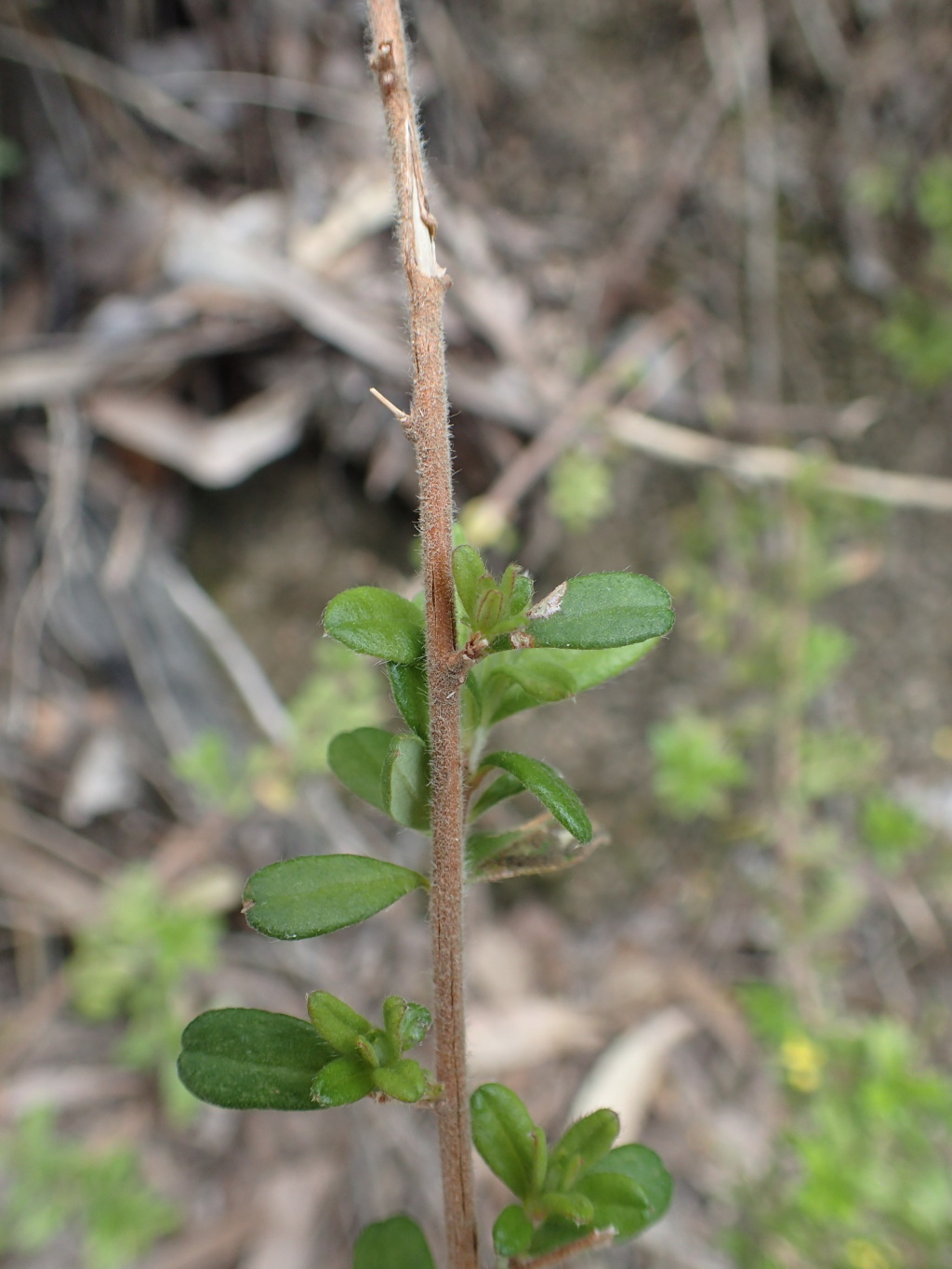Hibbertia hirticalyx
ToelkenErect, spreading or decumbent shrubs to 1(–3) m high; branches pubescent. Vestiture of tubercle-based, often antrorse simple and or stellate hairs over smaller stellate and sometimes simple hairs. Leaves elliptic to elliptic-obolanceolate, (5.6–)8–17(–25.6) mm long, 2–8(–10.2) mm wide, stellate-pubescent, often only tubercles persistent on upper surface of juvenile leaves; petiole 0.4–1.4 mm long; apex obtuse to rounded, often mucronate; margins narrow, recurved to revolute, distant from the scarcely raised central vein. Flowers on peduncles 2–8 mm long, terminal, but sometimes apparently axillary when on reduced short shoots or on main branches with continued axillary growth, subtended by 1 linear bract 3–4.4 mm long, usually two-thirds to as long as sepals; sepals 3.2–6.2 mm long, unequal, stellate pubescent usually with scattered, much longer simple hairs; petals cuneate to obovate-cuneate, 6–9.6 mm long, bright yellow; stamens (7–)8–12; filaments usually at least half connate; carpels 2, stellate-villous. Flowers Sep.–Nov.
WPro. Also Tas. Restricted to Wilsons Promontory, where locally common in wet areas in open forest.
Juvenile leaves of Hibbertia hirticalyx are usually less hairy, and often have hooked simple hairs on the lower leaf surface that are soon replaced by stellate hairs. Plants may resemble H. empetrifolia when only juvenile leaves are present, see note under that species.
 Spinning
Spinning
